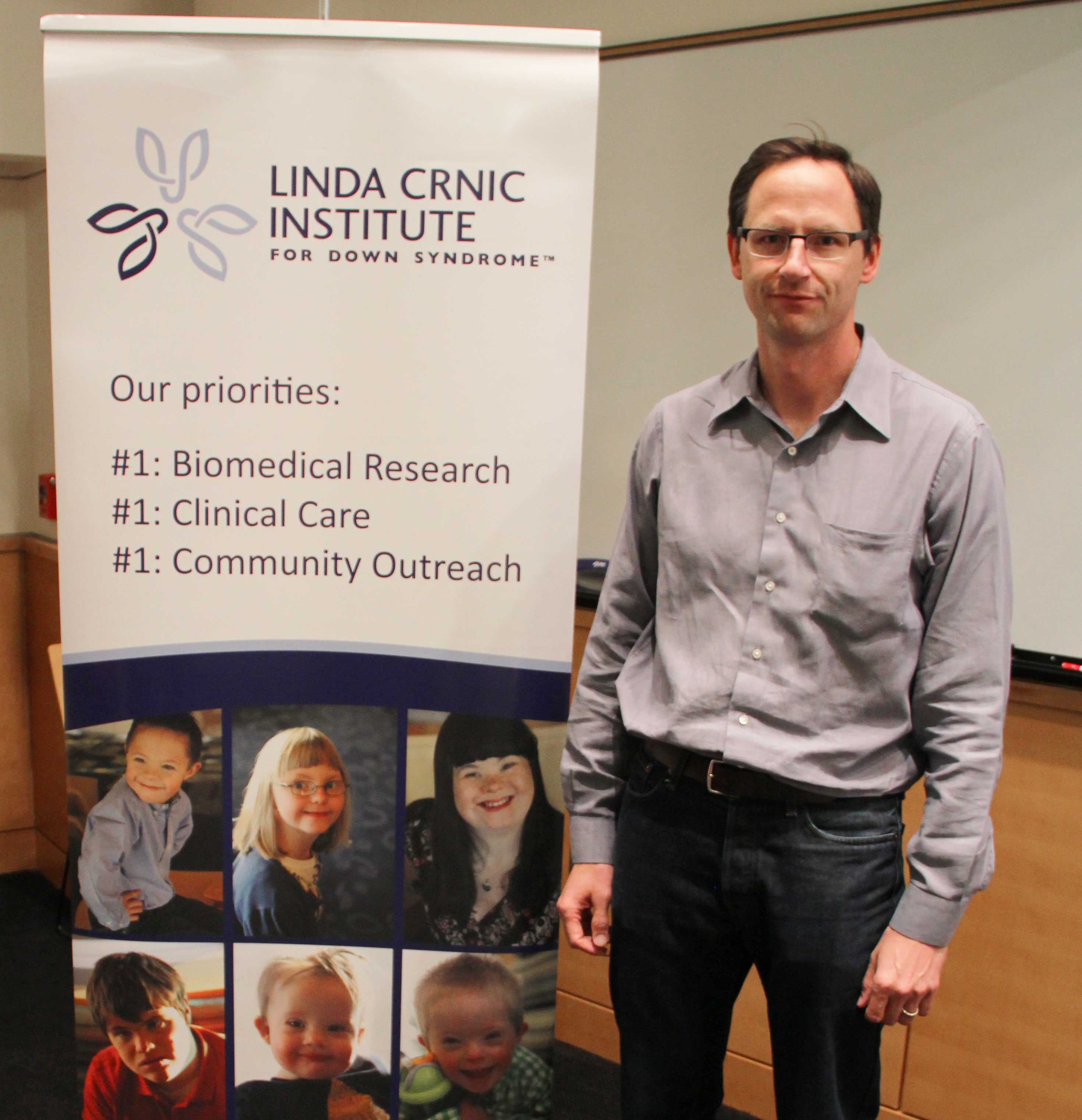Q&A with Matt Kennedy
In recognition of November as National Alzheimer’s Disease Awareness Month, the Global Down Syndrome Foundation held a Q&A with Dr. Matt Kennedy, who has received one of the inaugural Crnic Institute Grand Challenge Grants. Kennedy received the award for his research into commonalities between Alzheimer’s disease and Down syndrome, specifically the loss of synapses in the brain and the increased production of a toxic peptide called beta-amyloid.
1. Please describe the nature of your research.
My lab studies how connections between neurons in the brain called synapses are modified by our experiences. This process, termed “synaptic plasticity”, is critical for our ability to learn and remember past events, and is disrupted in numerous neurological disorders and diseases. Recently, with help from the Linda Crnic Instititue, we have been investigating how a protein fragment called amyloid beta destroys synapses and kills neurons in the central nervous system. Amyloid beta is one of the principle neurotoxic proteins responsible for Alzheimer’s disease and builds up rapidly in people with Down syndrome, since they carry an extra copy of the gene responsible for amyloid beta production.
2. How could your research end up benefiting people with Down syndrome?
The average life expectancy for individuals with Down Syndrome has increased dramatically over the past three decades and is now approaching 60 years of age (compared to 25 years of age in 1983!). The bad news is that nearly everyone with Down syndrome will have Alzheimer’s neuropathology by the time they are 40-50 years of age. This is because the gene for the neurotoxic agent responsible for Alzheimer’s (amyloid precursor protein) is located on chromosome 21. Thus any advances in the understanding and treatment of Alzheimer’s will have an enormous impact on people with Down syndrome.
3. How could your research end up benefiting people with Alzheimer’s disease?
Currently, there are no good therapies for Alzheimer’s disease. There has been an enormous amount of effort focused on drugs that block production of beta amyloid. Unfortunately, none of these drugs have worked in clinical trials. Thus, we need to understand more about how amyloid proteins exert their neurotoxic effects if we are going to develop effective therapeutics.
4. How important is the Crnic Supergroup in helping your research and promoting collaboration?
Very important. It has been a wonderful experience to interact with other members of the group. I have learned an enormous amount Down syndrome, and it’s great to see what my colleagues are doing. Several collaborations between my lab and others in the group have already formed. Any time you get this many outstanding scientists together, great things will happen!
5. How important is the Crnic Institute funding for advancing research on the CU campus?
This is a very important funding mechanism. While Down syndrome is one of the more prevalent conditions in the human population, it receives little attention from major funding agencies. This is compounded by the current federal funding climate, which is at a historical low point. Private funding mechanisms like the Linda Crnic Institute grant program are having an enormous impact on sustaining biomedical research programs and allowing scientists to branch into new fields where they could make major contributions.
6. Please tell us a little about yourself.
I recently started my lab in the Department of Pharmcology at the University of Colorado Anschutz Medical Campus in the the fall of 2011. I grew up in Minnesota and went to graduate school at the University of Washington in Seattle. Following graduate school, I did two postdoctoral fellowships-one at the University of California, San Francisco and a second at Duke University. So I have lived in the midwest, on both coasts, and now in Colorado, which I really love so far! My wife is also a scientist and we have twin daughters (just turned 5) who love getting out into the mountains.
7. Is there anything else you’d like to add?
Thank you to the Linda Crnic Institute for supporting my research!! Support from the Linda Crnic Institute has opened a new and promising research avenue for my lab that would not have been possible.
Recent Posts
- GLOBAL LEADERS – An Exclusive Interview with Erin Suelmann, Executive Director of the Down Syndrome Association of Greater St. Louis
- Sleep Apnea Across the Lifespan in People with Down Syndrome
- Government Profiles: Robert Aderholt (R-AL) & Tammy Baldwin (D-WI)
- Connor Long & Josh Peck: A GLOBAL Bromance
- GLOBAL Launches Pilot Fitness Program using Mann Method PT


 Experience our inspirational and groundbreaking videos and photos. Our children and self-advocates are beautiful AND brilliant!
Experience our inspirational and groundbreaking videos and photos. Our children and self-advocates are beautiful AND brilliant! Make sure your local Representatives are on the Congressional Down Syndrome Task Force.
Make sure your local Representatives are on the Congressional Down Syndrome Task Force.